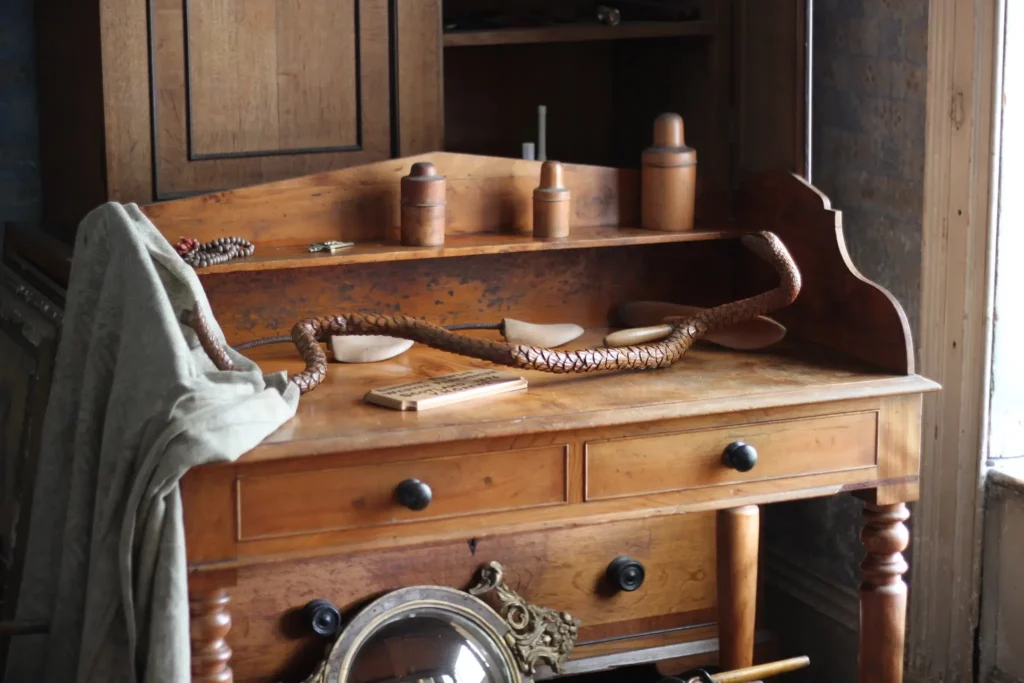Have you ever heard of monkey drawers? If not, you are not alone. These miniature drawers, which often feature intricate carvings and designs, are a rare and fascinating subject that has largely escaped the attention of the mainstream. However, monkey drawers have a rich and diverse history that spans thousands of years and various cultures. They also have a unique role in today’s society, serving as decorative items, collectibles, and symbols of various meanings. This article will explore the world of monkey drawers, from their historical origins to their modern-day significance. We will also look at the different types of materials and styles used in crafting these little treasures and the art and skill involved in making them. Whether you are a curious novice or an avid collector, you will find something interesting and informative in this article. Join us as we delve into monkey drawers’ mysterious and captivating world.
Historical origin of monkey drawers
The historical origin of monkey drawers is unclear, but it seems related to the popularity of simian art in Europe since the 16th century. Simian art, or singerie, is a genre of art that depicts monkeys in human-like situations, often as a satire of human follies and vices. One of the earliest examples of simian art is an etching by Pieter van der Heyden, based on a painting by Pieter Bruegel the Elder, that shows a sleeping peddler being robbed by a troop of monkeys. This etching sparked a craze for monkey-pictures in the Dutch art world, and later spread to other countries such as France and England.
Monkey drawers are a type of furniture that emerged from this artistic trend. They are miniature chests of drawers, usually made of wood, that feature carvings and designs of monkeys in various poses and activities. Some are humorous, such as monkeys playing musical instruments, smoking pipes, or wearing clothes; others are more symbolic, such as monkeys holding mirrors, books, or coins. Monkey drawers were often used as decorative items, collectibles, or gifts, and sometimes had hidden compartments or secret messages. They were also seen as a reflection of the owner’s personality, taste, and status.
Monkey drawers have a rich and diverse history that spans thousands of years and various cultures. They can be traced back to the ancient civilizations of Egypt, Crete, and Rome, where monkeys were depicted in artworks of all kinds. They also have connections to the exploration and colonization of the New World, where new species of monkeys were discovered and brought back to Europe. They also reflect the changing attitudes and values of the society, such as the rise of humanism, the Enlightenment, and the Industrial Revolution. Monkey drawers are a unique and fascinating subject that reveals a lot about the history of art, culture, and humanity.
Modern-day significance of monkey drawers
The modern-day significance of monkey drawers is difficult to determine, as they are not very common or widely known. However, based on some sources, we can infer that monkey drawers may have different meanings and values for different people and contexts. Here are some possible interpretations:
- Monkey drawers may be seen as a symbol of playfulness, humor, mischief, and curiosity, as these are some of the traits that monkeys are known for. They may also represent the creativity and problem-solving abilities of monkeys, who can adapt to various situations and challenges. Monkey drawers may appeal to those who appreciate these qualities and want to express them in their own lives.
- Monkey drawers may also be seen as a symbol of satire and critique of human society, as they often depict monkeys in human-like situations, mocking human follies and vices. This genre of art, known as singerie, originated in the 16th century and was influenced by the works of Hieronymus Bosch and Pieter Bruegel, the Elder. Monkey drawers may reflect the artist’s or the owner’s view of the world and its problems and may also serve as a reminder of the need for self-awareness and humility.
- Monkey drawers may also be seen as a symbol of exoticism and exploration, as they feature creatures that were rare and fascinating in Europe in the past. Monkeys were often brought from Africa and the New World by traders and explorers and were seen as symbols of wealth and status. Monkey drawers may evoke a sense of wonder and curiosity about the diversity of life and culture in the world and may also inspire a desire for travel and adventure.
- Monkey drawers may also be seen as a symbol of art and skill, as they demonstrate the craftsmanship and creativity of the artists who made them. Monkey drawers are often made of wood and feature intricate carvings and designs of monkeys in various poses and activities. They may also have hidden compartments or secret messages inside. Monkey drawers may showcase the talent and imagination of the artists and may also challenge the viewers to discover their secrets and meanings.
Materials and styles used in crafting monkey drawers
Different types of materials and styles are used in crafting these little treasures, depending on the preference and skill of the artist. Here are some examples of the variety and diversity of monkey drawers:
- Wooden monkey drawers: These are the most classic and common type of monkey drawers, usually made of hardwood such as oak, walnut, or mahogany. They feature intricate carvings and designs of monkeys in various poses and activities, such as playing musical instruments, smoking pipes, or wearing clothes. Some of them have hidden compartments or secret messages inside. Wooden monkey drawers showcase the talent and imagination of the artists, and may also challenge the viewers to discover their secrets and meanings.
- Metal monkey drawers: These are more modern and contemporary types of monkey drawers, usually made of metal, glass, or even reclaimed wood. They have a minimalist and sleek design, often featuring geometric shapes and patterns. Some have a metallic finish or a glossy coating, giving them a futuristic and elegant look. Metal monkey drawers may appeal to those who prefer a more simple and refined style, and may also reflect the art of organization in chaos.
- Paper monkey drawers: These are more playful and creative types of monkey drawers, usually made of paper or cardboard. They can be easily made at home, using recycled materials and basic tools. They can be decorated with paint, stickers, or other embellishments, giving them a colorful and fun look. Paper monkey drawers may represent the playfulness, humor, and curiosity of monkeys, and may also inspire the creativity and problem-solving abilities of the makers.
Conclusion
In this article, we have explored the world of monkey drawers, from their historical origins to their modern-day significance. We have also looked at the different types of materials and styles used in crafting these little treasures and the art and skill involved in making them. Monkey drawers are a rare and fascinating subject that reveals a lot about the history of art, culture, and humanity. They are also a reflection of the owner’s personality, taste, and status, as well as a source of wonder, curiosity, and creativity. Whether you are a curious novice or an avid collector, you will find something interesting and informative in this article. We hope you have enjoyed this unique insight into the mysterious and captivating world of monkey drawers.







